Reviews
William Crain
USA, 1972
Credits
Review by Adam Balz
Posted on 04 October 2012
Source MGM DVD
Categories 31 Days of Horror IX
When Bram Stoker’s Dracula was published in 1897 it introduced the world to what would become one of literature’s - and cinema’s - most iconic monsters. The monster drew immediate comparisons to historical figures like Elizabeth Bathory and Vlad the Impaler, but Stoker’s inspirations for the archetypical vampire seem to have been more contemporaneous: immigrants from continental Europe and epidemics that followed in their wake.
Stoker, however insensitively, was adapting social conditions in turn-of-the-century Britain for use in his novel, investing in his many characters, especially Dracula himself, a complex and touchy metaphorical utility. This utility, over the last few decades, has made its way into Dracula’s cinematic depictions, used extensively by writers and directors of all creeds and colors, including - to much variety and entertainment - African-Americans. On Thursdays throughout the month, we will examine the role of vampires as metaphors, as well as how those metaphors have shifted and changed according to evolving American social mores.
There are no standards that decide what makes a film qualifiedly “African-American,” so we are forced to ask ourselves: Does it involve having an African-American writer or director? African-American producers? A cast made up primarily of African-American actors and actresses, or perhaps a primarily African-American crew? Or does the film merely have to confront issues relevant to the African-American community? And if so, who decides what those issues are? On the subject of “vampires of color,” Dale Hudson observes that:
Vampire films that feature predominantly African American casts… have been largely dismissed for not reproducing faithfully the conventions of the (white) vampire film and the spectator pleasure it encodes. Critical analyses of the films’ production and reception histories suggest that media critics and fans dismiss criticism of race and racial oppression in these films. 1
Pigeonholed today as nothing more than a forerunner in the Blaxploitation genre, Blacula opens with an establishing shot of Count Dracula’s castle on a requisite dark and stormy night. Inside, African prince Mamuwalde and his wife Luva sit down with Dracula in the hopes of getting his support behind a law ending the slave trade. The Count, an eminent man in Europe, dismisses their request, saying, “Slavery has merit, I believe.” When reminded of the “barbarity” of slavery, the Count responds, “Barbarous from the standpoint of the slave, perhaps; intriguing and delightful from mine.” When Mamuwalde attempts to leave, Dracula’s heavies strike him unconscious; biting his neck before christening him with a new name - Blacula - the Count seals him in a casket to “starve for an eternity.”
This scene offers us the first of many metaphors. The vampirism embodied by Dracula and his goons represents the slave trade, with Dracula taking on the role of white American slave-masters. (Though he is supposedly Transylvanian, there is little hint of accent in Dracula’s speech.) His renaming of Mamuwalde is reminiscent of the renaming process African slaves endured after arriving in the United States, when significant tribal names were erased for more Anglicized monikers, and even Dracula himself refers to it as his “curse.” For the remainder of Blacula, Mamuwalde, his coffin bought and moved to America by a biracial gay couple, endures an internal struggle between his suppressed African heritage, represented in the film by a young African-American woman named Tina, who reminds Blacula of Luva4, and his forced white heritage, represented by both his name and vampirism.
Tim Kane, in his critical study of vampires, notes how Blacula’s violent behavior is contrasted with the calm, diplomatic manner of Mamulwalde throughout the film, paying special attention to the former’s facial features:
When Blacula first rises from his coffin, he sees the blood on Billy’s arm. He staggers forward, his face contorted into an expression of excitement. His physical appearance transforms. His eyebrows become overgrown, and hair sprouts from his cheeks. A widow’s peak fills out his forehead. He bares two fangs, long enough to be visible even with his mouth closed. His eyes leak with red blood, and after he attacks his victims, his lips are also red with blood. This version of the prince has none of the subtly of Mamuwalde. He solves problems physically, beating his adversaries into submission. He often chokes his enemies, crushing their throats. One victim is lifted above his head and tossed down a flight of stairs.3
This internal conflict over racial identity was expanded upon the very next year, when Bob Kelljan directed the sequel to Blacula entitled Scream, Blacula, Scream. Blacula, resurrected from suicide by Justin, the vindictive son of a dead voodoo high priestess, immediately bites Justin in the neck and enslaves him, ordering him to never leave the antebellum-style mansion he is tending after. Later, while walking the sidewalk of a city, he is approached by two pimps who threaten him for his money:
Blacula
What is it you want?Pimp 1
‘What is it you want?’ Shit.Pimp 2
You’re bread, man, all of it.Pimp 1
Or we’re gonna have to become anti-social and kick your ass, ya dig?Blacula
I’m sorry, I don’t have any bread with me. And as for kicking my ass, I strongly recommend that you give it careful consideration before trying.Pimp 1
You jive motha, either you give it up or we’re gonna take it out on your black ass.Blacula
You made a slave of your sister, and you’re still slaves, imitating your slave masters!
Both scenes - of Justin’s enslavement and Blacula’s encounter with the pimps - seem to suggest that Blacula is more tortured than before, torn between his need to stop any form of modern slavery and his desire to hold slaves himself. The house he restricts Justin to, besides being large and empty, recalls a plantation home, and the scene in which Justin confronts his family over inheriting the high priestess’ power is contrasted later by a scene in which Justin sits alone in the home; the tables and chairs that surround him are covered in white sheets, acting almost like ghosts, and by being forced to live in the house Justin is being forced to join them. For the remainder of the film, we see Blacula slowly becoming more and more dominated by his white lineage - the violent, vampiric side - than his learned and well-spoken side, which appears most notably at a party, when he comments on misidentified African artifacts.
Part of the reason is that, unlike Crain’s original film, this sequel contains no contrast for Blacula’s vampirism; Blacula featured a visible representation of African heritage in the character of Tina, while Scream, Blacula, Scream doesn’t, at least not at first. Eventually Blacula’s attention in Kelljan’s sequel focuses on Lisa, a practitioner of voodoo, a lover of African artifacts, and an apprentice to the dead high priestess. But while Blacula is initially drawn to Lisa by an affection for her, he soon relies on her solely for her abilities to cure him of his vampirism - a blatant desire on Blacula’s part to purge himself once and for all of white European influences through traditional African practices. But the attempt at exorcising his white heritage fails - perhaps, for the sake of the film’s message, necessarily so - and as Scream, Blacula, Scream draws to a close, with Lisa refusing to help him after he strikes dead a slew of police officers, Mamuwalde does, in fact, scream: “The name is Bla-cu-la!”
The metaphor of racial uncertainty, of past and present, is best represented in a film released three years after Kelljan’s sequel entitled Dr. Black, Mr. Hyde. Directed by William Crain, Dr. Black, Mr. Hyde is the story of the aptly named Henry Pride, an African-American biochemist who also practices medicine part-time at the local free clinic. Researching how to cure liver disease, Pride tests out a new serum on himself, which transforms him into an unstoppable white beast - the Hyde to his Jekyll. And as this monster, he walks the city streets at night killing prostitutes - actions, we later learn, subconsciously meant to avenge his mother, who worked as a maid in a large brothel and died without any assistance from her employers.
One of Pride’s regulars at the free clinic, a prostitute named Linda, provides the film with its message in a conversation less than ten minutes into the film:
Dr. Pride
Now I don’t want to sound like I’m preaching, but obviously prostitution’s not the healthiest job to have… not to mention what it does for you psychologically.Linda
Ah, the good doctor again, trying to save my soul.Dr. Pride
You know you are intelligent and beautiful, and there’s so many things you can do.Linda
You mean like the maid in some tacky hotel cleaning toilets? Thanks but no thanks, I like what I’m doing.Dr. Pride
That’s such a copout.Linda
Oh whadda you know about it, mister big-shot doctor? You’re the copout. The only time you’re ever around black people is when you’re down here [at the free clinic] clearing your conscience.Dr. Pride
Oh, nigger, please.Linda
You know that white coat really suits you, ‘cause you don’t know nothing about the ghetto. I mean you dress white, you think white, you probably even drive a white car. And you know what? If I was white, I just might have a chance.
In fact, Pride’s car is a luxurious model that impresses those around him, including Linda. And because it’s such a visible sign of Pride’s detachment from “the ghetto,” as Linda says, it comes as no surprise when Pride uses that very car to both run over a prostitute and crush a pimp against an alley wall. It’s a manifestation of his power as a white man - a white monster, as it were - that is also visible in a scene in which Pride (as his Hyde) is confronted by a gang of hoodlums and manages to dispatch all of them with ease, even taking a switchblade to the stomach with no visible effect.
Still, Dr. Black, Mr. Hyde has little connection to vampire films. Though the DVD cover describes Pride’s alter-ego as an “albino vampire,” Hyde is never seen biting anyone, or even growing fangs; though he transforms at night, Hyde can just as easily convert back to Pride; he is never referred to as a vampire, not even by the police; and Hyde is killed in the end after being weakened by a helicopter searchlight - manufactured sunlight, it could be argued - and shot from below, having climbed one of the Watts Towers in a manner reminiscent of King Kong. The location of Hyde’s death, as well as Pride’s, is significant, as Watts was the location of a 1965 riot caused by tension between the police and members of the African-American community.
Dr. Black, Mr. Hyde opens with a telling shot: A tilt upward from a tumbledown one-story home to a large, multi-story hospital in the background. This hospital, which happens to be where Pride conducts his research, is white and imposing, and it overpowers the small house in every way. And yet it’s in that hospital that Pride’s violent alter-ego is created, where he dons his “white coat” and abandons, at least according to Linda, his heritage, his identity. The tilt cuts to a shot of Pride and his assistant leading a group of men - all black, all dressed in more traditional garb - through his research labs. Pride’s confusion over race is ultimately more pronounced than Blacula’s, as it overtakes him so quickly that he’s never given the chance to look for - or want - a cure.
This is the internal conflict of each of these films, the social and cultural struggles many African-Americans were facing in the 1970s, analogized in some supernatural transformation: into vampires, into a violent white alter-ego, persons still clearly victims of racial prejudice and discrimination who still faced resistance in asserting their cultural identity. Does the pursuit of the American dream manifest a goal that could be seen as Anglo, thereby abandoning one’s place in the “African-American community?” They are not easy questions to answer, and even today we as a country are still attempting to deal with the ramifications of centuries of intolerance that have gone unresolved across all backgrounds. In the years that followed Blacula, African-American filmmakers would depict yet more conflicts in their community, including the role of African heritage in modern-day America and how to handle the AIDS epidemic.
- Hudson, Dale. “Vampires of Color and the Performance of Multicultural Whiteness.” The Persistence of Whiteness: Race and Contemporary Hollywood Cinema. Ed. Daniel Bernardi. New York: Routledge, 2008. 127-156. ↩
- Kane, Tim. The Changing Vampire of Film and Television: A Critical Study of the Growth of a Genre. Jefferson, N.C.: McFarland & Co., 2006. ↩
- Leatherdale, Clive. Dracula: The Novel and the Legend. Wellingborough, UK: Aquarian, 1985. ↩
- Both Luva and Tina are played by the same actress, Vonnetta McGee. ↩
More 31 Days of Horror IX
-
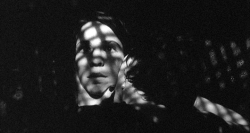
The Addiction
1995 -

Psycho III
1986 -
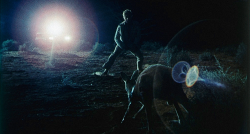
Wake in Fright
1971 -
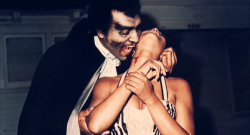
Blacula
1972 -
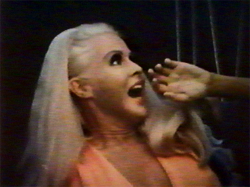
Big Foot
1970 -

Trollhunter
2010 -
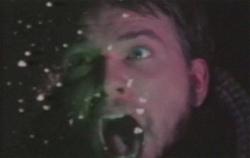
Invasion from Inner Earth
1974 -
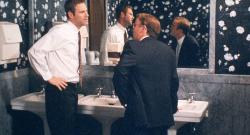
In the Company of Men
1997 -
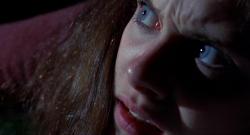
Happy Birthday to Me
1981 -
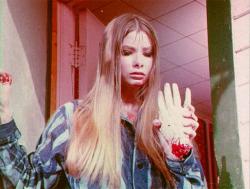
I Drink Your Blood
1970 -
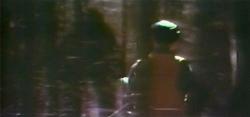
The Legend of Boggy Creek
1972 -

Maximum Overdrive
1986 -
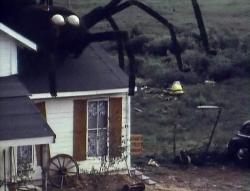
The Giant Spider Invasion
1975 -
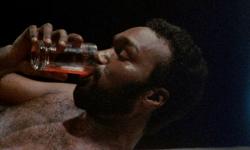
Ganja & Hess
1973 -
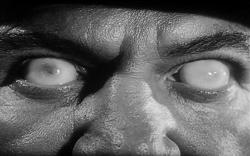
Not of This Earth
1957 -

Let’s Scare Jessica to Death
1971 -
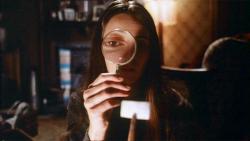
Next of Kin
1982 -
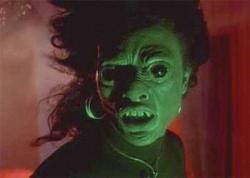
Def by Temptation
1990 -
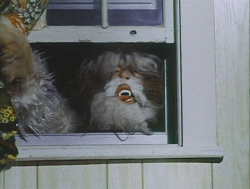
Shriek of the Mutilated
1974 -
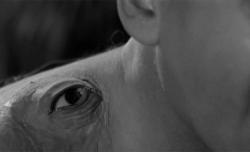
The Manster
1959 -
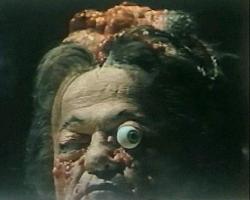
The Alpha Incident
1978 -
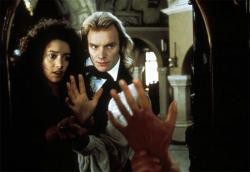
The Bride
1985 -
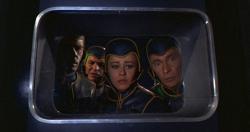
Planet of the Vampires
1965 -

The Hole
2009 -
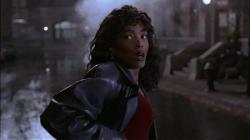
Vampire in Brooklyn
1995 -
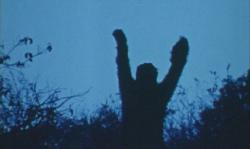
Sasquatch: the Legend of Bigfoot
1977 -
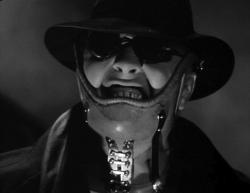
Mad Love
1935 -
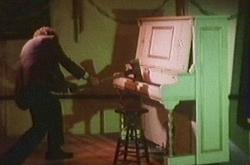
The Demons of Ludlow
1983 -

Habit
1997 -

Elephant
1989 -
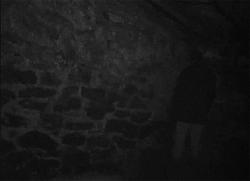
The Blair Witch Project
1999
We don’t do comments anymore, but you may contact us here or find us on Twitter or Facebook.



